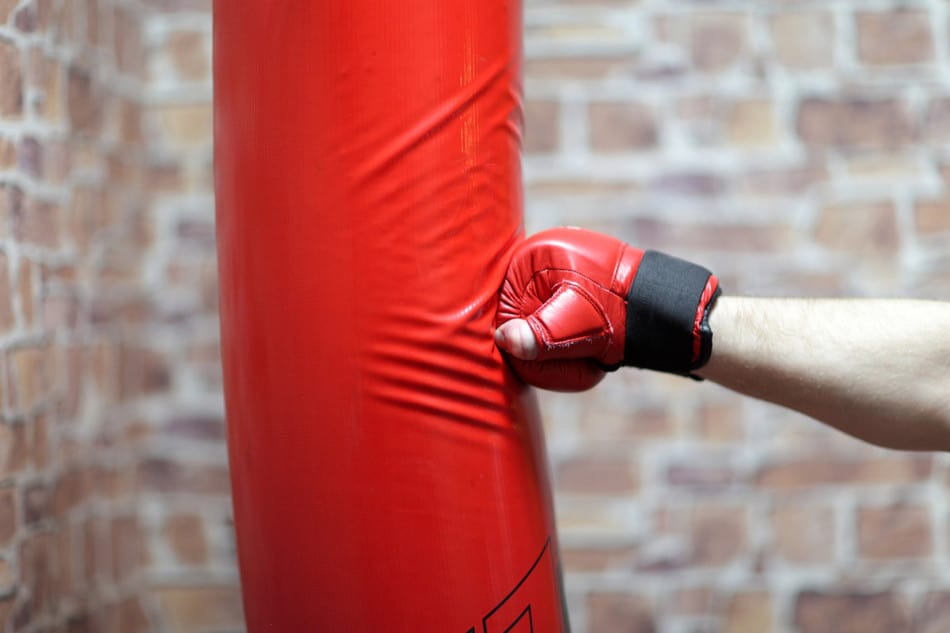Learning boxing comes with so many benefits, such as being able to defend yourself in times of danger and keeping fit. Whether you want to learn boxing as a hobby or for professional purposes, you can do it without involving a trainer. But how exactly do you do that?
Below are the steps you can follow to teach yourself boxing.
- Learn the fundamentals.
- Get the necessary boxing gear and equipment.
- Know the mistakes to avoid when learning boxing.
- Get a boxing partner if possible.
- Learn the rules of boxing.
- Learn boxing workout.
In this article, I’ll elaborate more on how you can teach yourself boxing. I’ll also discuss the benefits of teaching yourself rather than getting a trainer and some of the challenges you may experience.
Also Read: Can You Learn Kickboxing On Your Own?
1. Learn the Fundamentals
Teaching yourself boxing is just like teaching yourself anything in that your first step is learning the fundamentals. Here are the essential things you need to know about boxing to get started:
Stance
Learning proper boxing stance is very crucial as it gives you balance, mobility, and power. To learn proper stance, you first need to understand that you should place your weak foot in front and strong at the rear.
Place the weak foot toe and the strong foot heel on an imaginary line between the feet. In simple terms, imagine there is a straight line between the feet. You can also use a string for more precision.
The angle between the front foot and the imaginary line should not exceed 45 degrees. Additionally, the angle between the rearfoot and the line should range between 60 and 70°.
On top of that, ensure that the distance between the two feet is more than shoulder length apart.
From there, bend the knees a little bit and lift the rear foot heel slightly from the ground. By doing so, you increase both mobility and balance.
Boxing Stance Steps
A proper stance should look like this:
- The front toe and the back heel on the center (imaginary) line.
- Knees bent slightly.
- Feet diagonal.
- Elbows down.
- Hands up.
- Head behind the gloves, chin down.
- Relax, breathe.
Guard
A guard is used to protect the head and body. It also helps you throw punches harder and quicker. Just like you did for the stance, keep the weak hand at the front and the strong one at the rear.
That means if you are right-handed, the right hand should be at the rear while the left one should be in front. This position helps you build more momentum and hit harder using your strong hand.
For right-handers who put their right hands on the rear, the stance is called an orthodox stance. For left-handers, where the left hand is on the rear, it’s referred to as a southpaw stance.
Lead hand means the left hand for right-handers. For left-handers, lead hand means their right hand. That’s why boxers don’t use right or left hands but rear and lead hands.
Boxing Guard Steps
A proper guarding stance should look like this:
- Rear hand on the right cheek – if you are a southpaw, the hand should be on the left cheek.
- Lead hand in front of the face (7-9 in or 17.78-22.86 cm).
- Palms facing each other.
- Chin down.
- Eyes on the opponent.
- Elbows tight.
- Back straight.
Punches
Throwing punches is simply relaxing, then accelerating the hands towards your target. Tighten the fist at the impact moment, then loosen the hand as you throw more punches.

The trick here is to use all your body weight behind the punches as you avoid falling off balance. As a beginner, you only need to learn the basics of punching. With time, you’ll be able to throw them from several other positions with much ease.
When punching, the easiest way to score a knockout is by hitting your opponent’s chin. However, that is not always easy since your opponent will place their chin down, where the gloves and the shoulders protect it.
Another area you can aim for is behind the ear. Although it’s easier to score a knockout by hitting the chin rather than behind the ear, you can still aim for it, especially when your opponent places their chin down. Punching behind the ear is a sure way of dazing your opponent.
Punching Tips
Here are some tips to remember for effective punching:
- Ensure you are in the boxing stance before punching.
- Place your hands up and the elbows against the body.
- Get the hand in the same position quickly after punching.
- Don’t extend both hands at the same time; use the other hand to protect the head.
- Don’t lean forward; instead, keep the back straight, as leaning forward could cause an imbalance.
- Keep the hands open and only tighten the fist when you get to the target; that makes your shots faster.
- When punching, exhale sharply and take carefully measured breaths.
- Use your entire body and not just the arms to generate more momentum and make the punches harder.
Defense
There are several defense techniques for boxing. As a beginner, the first thing you should learn is blocking. It is an easy way of maintaining the punching range while avoiding getting hurt. After mastering blocking, you can go ahead and master other defense techniques such as slipping, rolling, and parrying.
Advanced defense techniques are much better since they allow you to defend yourself while throwing punches simultaneously, unlike blocking.
Defense Tips
Here are some essential tips for an effective defense:
- Stay balanced when blocking punches.
- Watch for the opponent’s strong hand and defend yourself from it most.
- Fight back even as you defend yourself.
2. Get The Necessary Boxing Gear and Equipment
To really get started in the sport, there are a few things you’ll want to purchase and have readily available for practicing.
Punching Bag
As a beginner, you’ll need a hard-punching bag to develop punching skills. These bags are available in different materials and different hardness levels, depending on the filler materials used. Here are a couple of the best punching bags for beginners:

MaxxMMA Water/Air Heavy Bag
The MaxxMMA on Amazon offers a unique punching experience by simulating the feeling of striking a real human. Its adjustable weight range from 70 to 120 lbs accommodates various users’ needs. The added advantage of a 2-year free replacement warranty on the bladder provides assurance and durability for customers.
You can check it out here!
Jayefo Sports Punching Bag
The Jayefo Sports Punching Bag on Amazon.com comes unfilled, making it very affordable in buying and shipping prices. This also allows you to fill it with the material of your choice. It has industrial heavy hanging straps with reinforced stitching that makes it very durable.
You can check it out here!
Boxing Shoes
Boxing shoes are not necessary for beginners, but you can still get them for a better experience. Boxing shoes provide you with superior grip, which tends to increase your agility. Additionally, these shoes are usually lightweight, which provides you with extra comfort.
The Ringside Diablo Boxing Shoes on Amazon.com are some of the best money can buy. They are made with breathable nylon for comfort while fighting and have a non-slip rubber sole that ensures your safety.
You can check them out here!
Hand Wraps
Hand wraps make your hands a bit more compact when making a fist. They are usually worn under boxing gloves and are excellent at protecting the knuckles from getting injured. You can have more confidence to punch when you know that your hands are well-protected.
On Amazon.com, you can get the Sanabul Elastic Professional Handwraps for Boxing. These are an excellent choice because they’re breathable and fast-drying. Plus, they come in a ton of different colors.
You can check them out here!
Boxing Gloves
You need to protect your knuckles when hitting the boxing bag using gloves. Boxing gloves should be comfortable and right-sized. These Liberlupus Boxing Gloves on Amazon.com are ideal since they are made of a breathable mesh and have a skin-friendly liner, which offers superior comfort to beginners. Additionally, they are unisex.
You can check them out here!

You can also check out the Everlast Pro Style Training Gloves on Amazon.com. They are durable and are available in a warm color.
Mouthguard
If you are going to do any sparring, then you’ll need a mouthguard. A mouthguard offers protection against so many things, such as losing a tooth, injuring the jaw, and biting the tongue. You have no reason to risk getting injured while there is available protective gear.
3. Know the Mistakes To Avoid When Learning Boxing
When doing something for the first time, you can make mistakes unknowingly. Some of these mistakes are hard to rectify, so the best thing is to identify and avoid them. That will save you from doing things the wrong way while thinking everything is alright.
Here are some of the most common mistakes you should avoid:
- Lifting your feet while punching. Doing so decreases your balance.
- Focusing on power too much and forgetting about balance, speed, and accuracy.
- Throwing too many or too few punches.
- Not taking enough rest while practicing.
- Covering the eyes when defending.
4. Get a Boxing Partner if Possible
While starting, you can use a punching bag to train yourself. However, you might want to get a partner later. Having a boxing partner is fun, and you can always motivate each other. It also helps you put the skills you learn into use.
For example, you can practice blocking punches, which is not possible when using a punching bag. Sadly, it might be hard to get someone interested in boxing, but just ask around; you might be lucky.
5. Learn the Rules of Boxing
Boxing has so many rules aimed at making it safe, fair, and competitive for professional fighters. If there were no rules, you can imagine how dangerous it would be. Rules may vary, depending on whether it’s an amateur or a professional match.
Some of the commonly accepted rules include:
- Fighters should not hit their opponents below the belt, kick, or bite them.
- You can’t strike with your forearm, elbows, or head.
- A fighter must oblige whenever a referee signals for a break.
- A fighter should not hit an opponent after they are knocked down.
You can find more detailed rules here.
6. Learn Boxing Workout
You’ll need to work out when learning boxing. If one day you become a professional boxer, you’ll still need to work out consistently.
Working out keeps you fit, which is good for your health generally and especially as a boxer. Here are some of the ideal workouts you should engage in when training to be a boxer.
Jumping Rope
Jumping rope helps in building a lean and strong body. Additionally, it helps you develop coordination and endurance, which are crucial in boxing. The best thing about jumping rope is that you don’t need special equipment; just a simple rope and some space, and you are good to go.
You can check out my favorite jumping rope here.

Burpees
Burpees are excellent at increasing strength and endurance since they focus on the entire body. They are a combination of several basic exercises, including squats, pushups, and planks. You also don’t need any equipment to do them.
Sit-Ups
You need a strong core to provide you with the strength to throw punches. Doing sit-ups is one way of strengthening your core. There are several variations you can try. If you haven’t exercised in a long time, you might find it difficult to do sit-ups, but you’ll improve with time.
Pushups
Pushups are excellent at making your arms, shoulders, chest, and core muscles strong. Just like sit-ups, it might not be easy to do several of them at once as a beginner who hasn’t been exercising for the longest time. Start small, and with time, you’ll become a pro.
Challenges You Might Face While Learning Boxing
As with any new undertaking, getting started isn’t without its challenges. Here are some of the most common problems new boxers often encounter:
You Might Not Get a Training Partner
Having a boxing partner comes with several benefits, especially since it allows you to get real experience boxing.
You can easily get a partner when someone is training you since they might recommend other people they are training. However, when doing it solo, you may not know anyone who’s learning boxing, which means you have to stick with the punching bag.
Lack of Motivation
Learning a new skill requires a lot of discipline. If there is no one to motivate or push you, you can easily relax and not pay much attention. That means you will take more time to learn the skills. To avoid this, create a schedule and make sure you stick with it faithfully.
No Opportunity To Spar
To spar is to exchange blows with someone else. This is necessary for boxing to help you learn how to block, dodge, or counter. So if you are training solo at home, you only have your punching bag with which you can’t learn all these sparring skills.
You are, therefore, unlikely to learn the self-defense skills in boxing.
Conclusion
Boxing is fun. However, you require a lot of training to become a great boxer. Even the best boxers had to start somewhere before becoming pros.
Whether you are doing it for fun or have professional aspirations, you can learn boxing by yourself and master it with time. You only need to learn the basics, get the necessary equipment, know and understand the rules, and overcome the challenges of self-training.
If you want to read a book about boxing I would recommend “Champions Fighting: Explosive Punching and Aggressive Defense” from the legendary Jack Dempsey.
You can check it out here!






